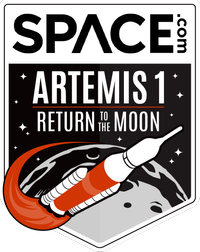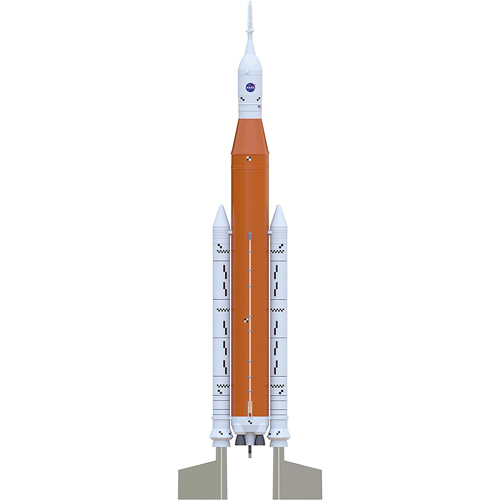NASA replaces leaky seals on Artemis 1 moon rocket, fueling test next
A fueling test of the Artemis 1 Space Launch System rocket could occur on Sept. 17.


NASA engineers replaced leaky seals on two fuel lines of the Artemis 1 moon rocket over the weekend, setting the stage for a fueling test to see if the repairs worked.
Engineers working on the tail of the massive Artemis 1 Space Launch System (SLS) megarocket completed the seal replacements on Friday (Sept. 9), NASA officials said in an update.
The repair work is aimed at plugging a hydrogen fuel leak in an 8-inch line leading into the core stage of the 32-story SLS rocket. That leak forced NASA to call off a Sept. 3 launch attempt of Artemis 1, the first uncrewed test flight of the Artemis program that aims to return astronauts to the moon. While replacing that seal, engineers also replaced the seal on a smaller 4-inch hydrogen "bleed line" that also saw a leak in a scrubbed Aug. 29 launch try.
Related: NASA's Artemis 1 moon mission: Live updates
More: NASA's Artemis 1 moon mission explained in photos

You can launch a Space Launch System of your own with this Estes NASA SLS model rocket for a 1:200 scale version of NASA's moon megarocket. Read more about it.
With the repair work complete, NASA is now preparing for a fueling test to check if the SLS rocket's hydrogen leaks are indeed fixed. That test could occur as early as Saturday, Sept. 17, and will fill the 322-foot-tall (98 meters) rocket with the 736,000 gallons of liquid hydrogen and liquid oxygen it needs for launch, NASA has said.
"This demonstration will allow engineers to check the new seals under cryogenic, or supercold, conditions as expected on launch day and before proceeding to the next launch attempt," NASA wrote in the update on Friday.
On Thursday (Sept. 8), NASA officials said it is targeting Sept. 23 for the next Artemis 1 launch attempt. A Sept. 27 date is also available. Both launch opportunities depend on NASA fixing the fuel leak and the SLS rocket passing its fueling test, the agency said.
Breaking space news, the latest updates on rocket launches, skywatching events and more!
NASA also needs to secure a waiver from the U.S. Space Force so it will not have to roll the SLS back to its Vehicle Assembly Building for standard tests of the rocket's flight termination system, a system designed to destroy the rocket if it veers off course during launch.
The upcoming fueling test will allow NASA to perform a so-called "kick-start bleed test" on the SLS rocket's four main engines. That test is designed to chill the engines down to a temperature of minus 420 degrees Fahrenheit (minus 251 degrees Celsius) to prepare them for their super-chilled propellant. The agency was unable to perform that test during the first two Artemis 1 launch attempts.
"Teams will confirm the leak has been repaired and also perform the kick-start bleed test and a pre-pressurization test, which will validate the ground and flight hardware and software systems can perform the necessary functions required to thermally condition the engines for flight," NASA officials wrote in the update. "Following the test, teams will evaluate the data along with plans for the next launch opportunity. "
Email Tariq Malik at tmalik@space.com or follow him @tariqjmalik. Follow us @Spacedotcom, Facebook and Instagram.

Tariq is the award-winning Editor-in-Chief of Space.com and joined the team in 2001. He covers human spaceflight, as well as skywatching and entertainment. He became Space.com's Editor-in-Chief in 2019. Before joining Space.com, Tariq was a staff reporter for The Los Angeles Times covering education and city beats in La Habra, Fullerton and Huntington Beach. He's a recipient of the 2022 Harry Kolcum Award for excellence in space reporting and the 2025 Space Pioneer Award from the National Space Society. He is an Eagle Scout and Space Camp alum with journalism degrees from the USC and NYU. You can find Tariq at Space.com and as the co-host to the This Week In Space podcast on the TWiT network. To see his latest project, you can follow Tariq on Twitter @tariqjmalik.
